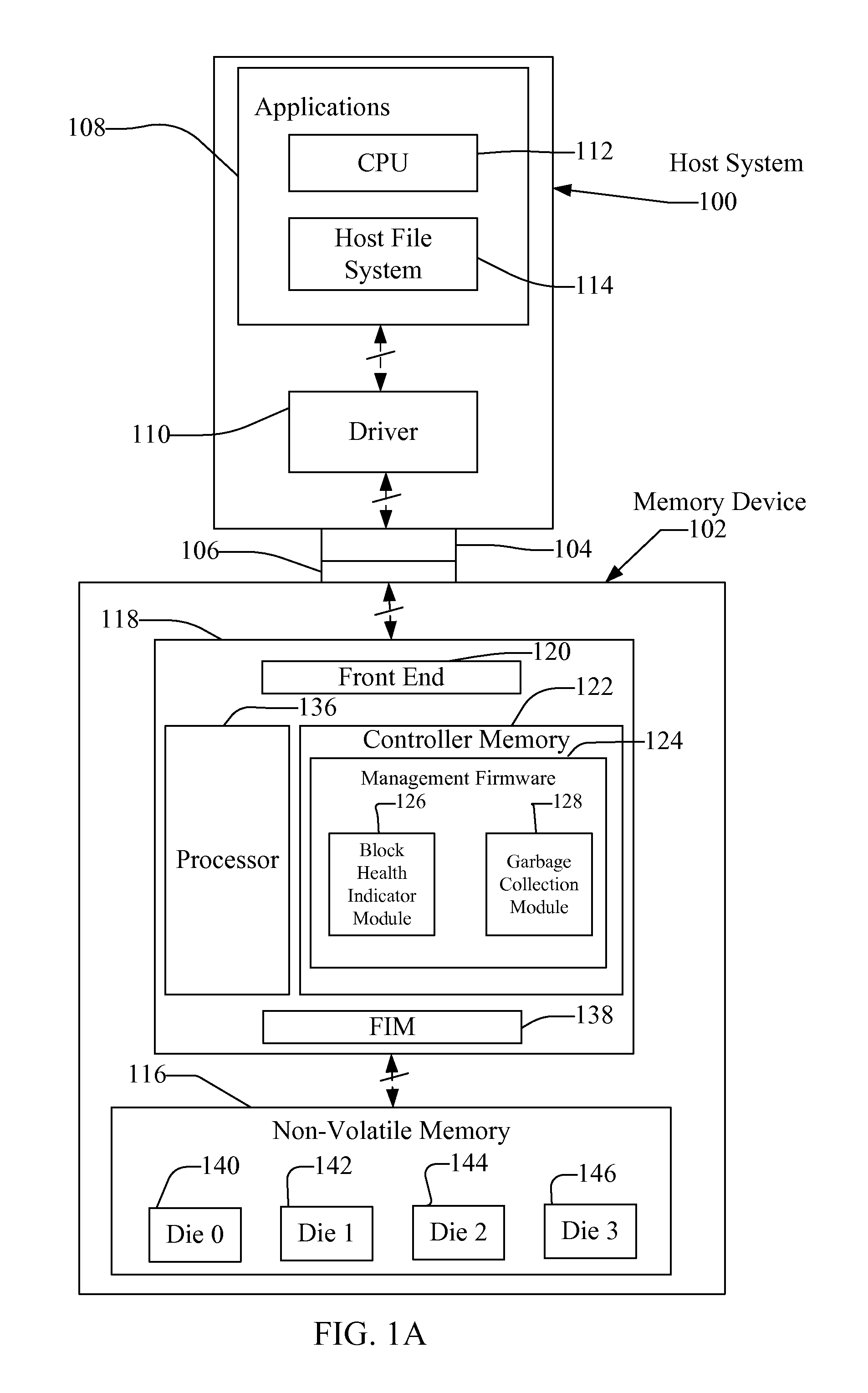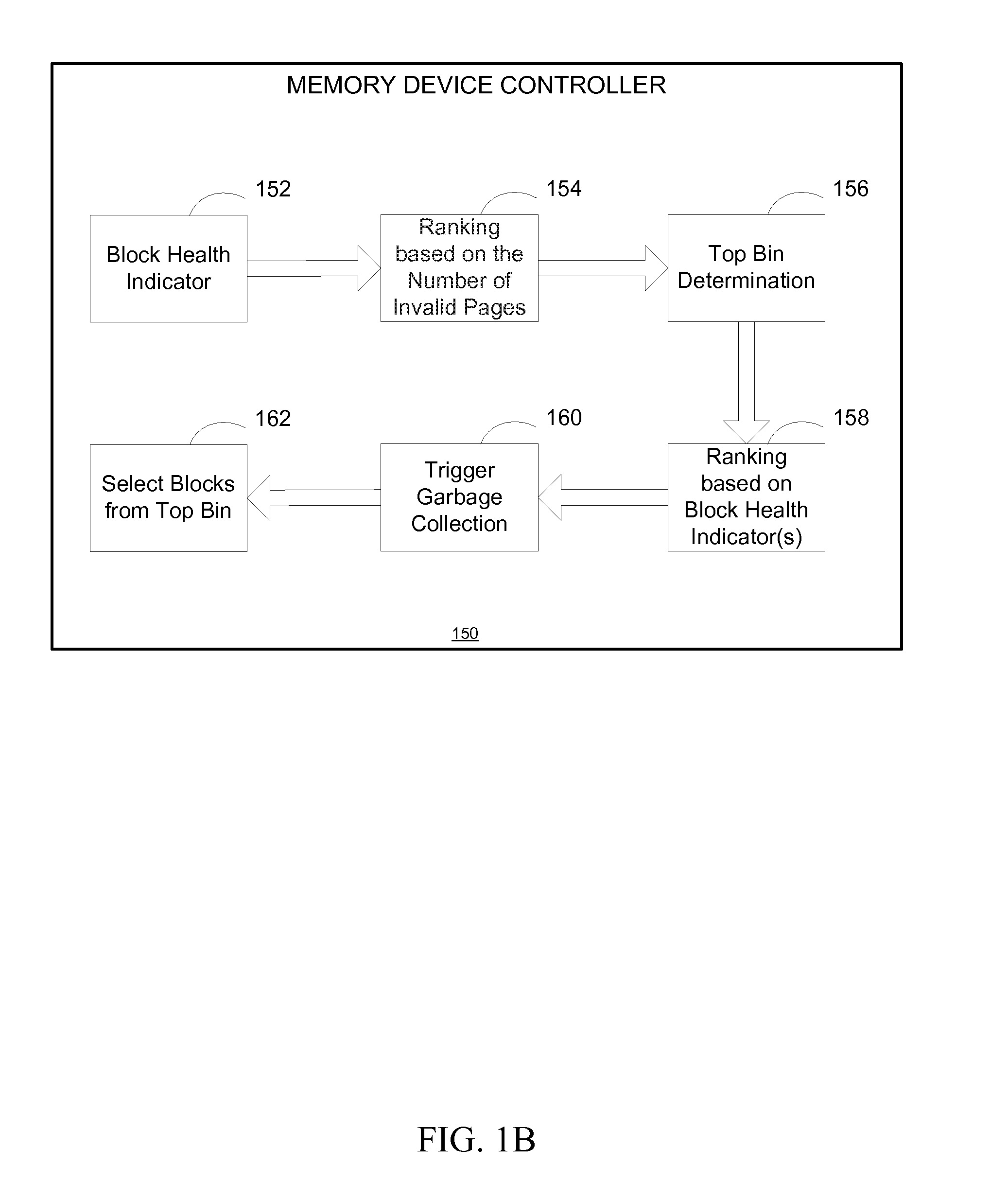System and Method for Selecting Blocks for Garbage Collection Based on Block Health
a technology of health and block selection, applied in the field of data management, can solve problems such as write amplification and memory may not have sufficient spa
- Summary
- Abstract
- Description
- Claims
- Application Information
AI Technical Summary
Benefits of technology
Problems solved by technology
Method used
Image
Examples
Embodiment Construction
[0023]As discussed in the background, blocks are typically selected for garbage collection solely based on the number of invalid pages in a respective block. For example, the system controller in the memory device may continuously rank the blocks based on the number of invalid pages, and select for garbage collection the blocks with the maximum number of invalid pages (e.g., those blocks ranked highest in the number of invalid pages). This focus on the number of invalid pages does reduce the write amplification problem. However, solely focusing on the number of invalid pages is one-dimensional and limiting.
[0024]In one embodiment, sections of memory (such as blocks) may be selected for garbage collection based on one or more other criteria, such as one or more memory section health indicators (such as one or more block health indicators). Thus, the one or more block health indicators may be used to at least partly determine which blocks to select for garbage collection. In a first m...
PUM
 Login to View More
Login to View More Abstract
Description
Claims
Application Information
 Login to View More
Login to View More - R&D
- Intellectual Property
- Life Sciences
- Materials
- Tech Scout
- Unparalleled Data Quality
- Higher Quality Content
- 60% Fewer Hallucinations
Browse by: Latest US Patents, China's latest patents, Technical Efficacy Thesaurus, Application Domain, Technology Topic, Popular Technical Reports.
© 2025 PatSnap. All rights reserved.Legal|Privacy policy|Modern Slavery Act Transparency Statement|Sitemap|About US| Contact US: help@patsnap.com



